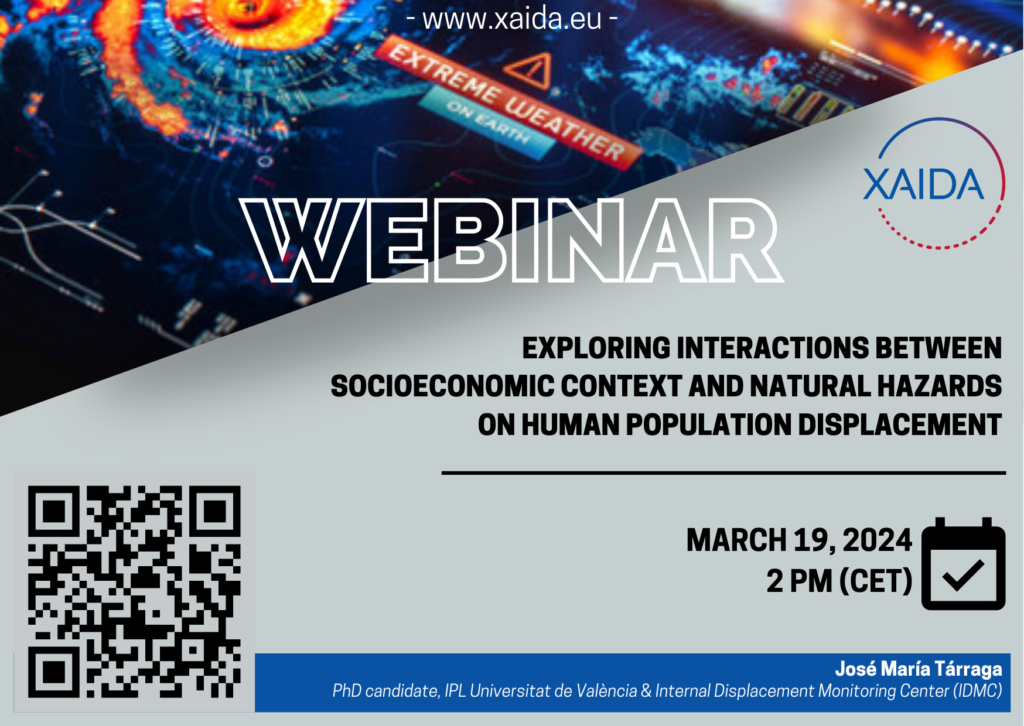XAIDA WEBINARS | Exploring interactions between socioeconomic context and natural hazards on human population displacement
XAIDA is now hosting an open monthly webinar. Within the XAIDA project, sixteen research institutes and climate risk practitioners, aim to develop and apply novel artificial intelligence methods to better assess and predict the influence of climate change on extreme weather. Join the webinar each month to dive into interesting topics such as machine learning for climate extremes, the societal impact of extremes, and education about climate change.
Coordination: Maria Gonzalez-Calabuig (Univ. València), Oana-Iulia Popescu (DLR), Manon Rousselle (IPSL)
March 19th at 2 PM (CET)
Title: Exploring interactions between socioeconomic context and natural hazards on human population displacement
Abstract: Climate change is leading to more extreme weather hazards, forcing human populations to be displaced. We employ explainable machine learning techniques to model and understand internal displacement flows and patterns from observational data alone. For this purpose, a large, harmonized, global database of disaster-induced movements in the presence of floods, storms, and landslides during 2016–2021 is presented. We account for environmental, societal, and economic factors to predict the number of displaced persons per event in the affected regions. Here we show that displacements can be primarily attributed to the combination of poor household conditions and intense precipitation, as revealed through the interpretation of the trained models using both Shapley values and causality-based methods. We hence provide empirical evidence that differential or uneven vulnerability exists and provide a means for its quantification, which could help advance evidence-based mitigation and adaptation planning efforts.
Reference: https://www.nature.com/articles/s41467-023-43809-8







